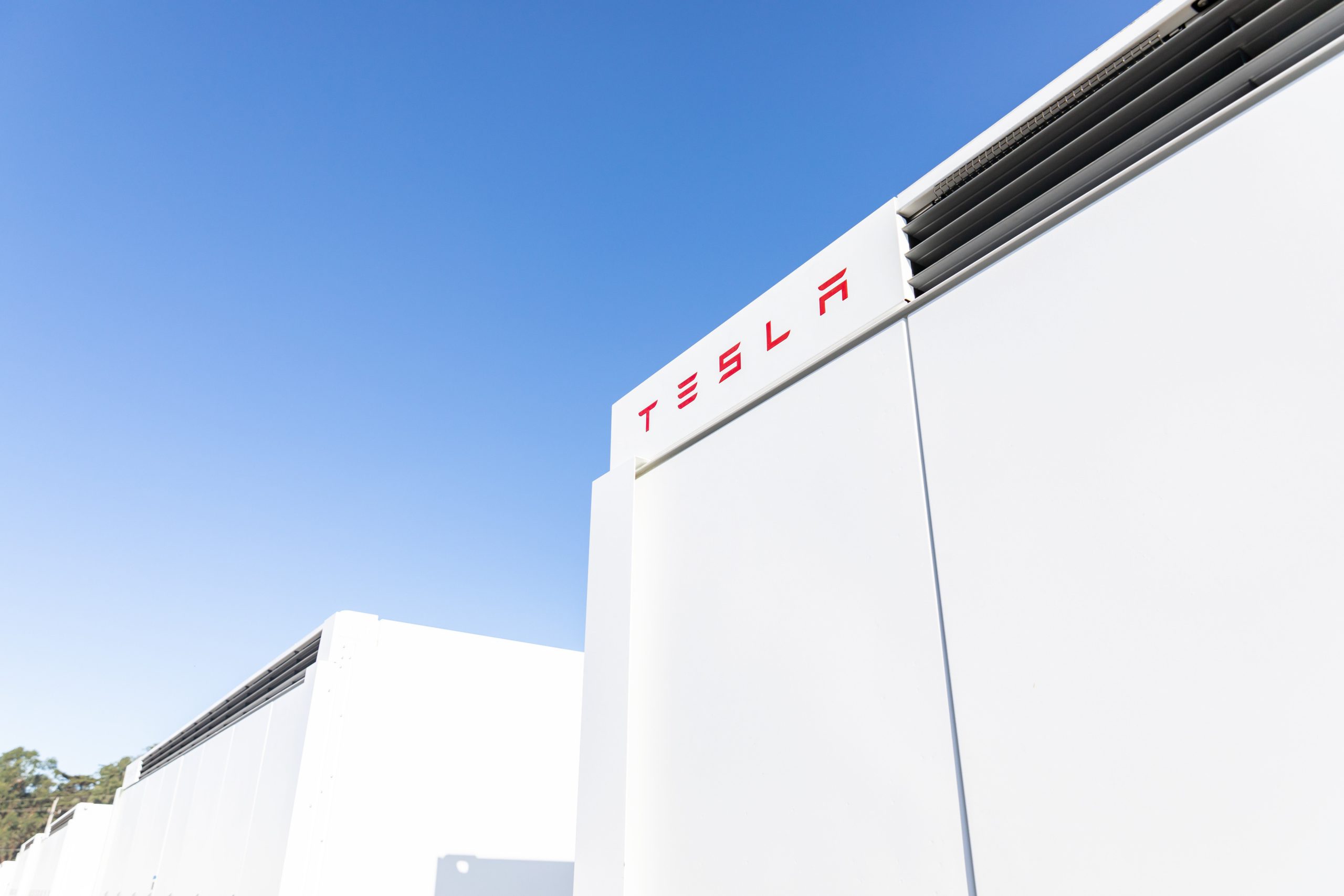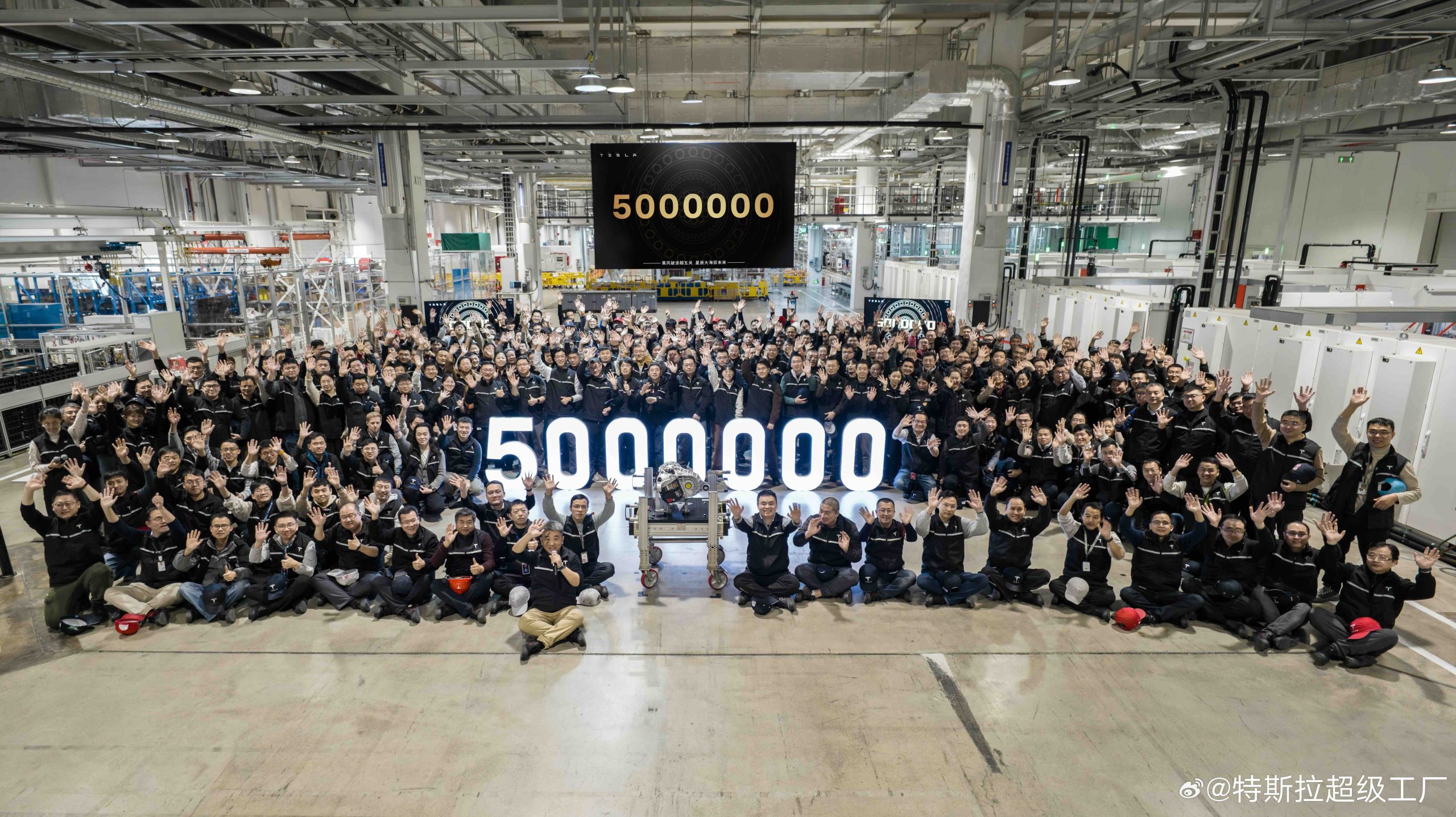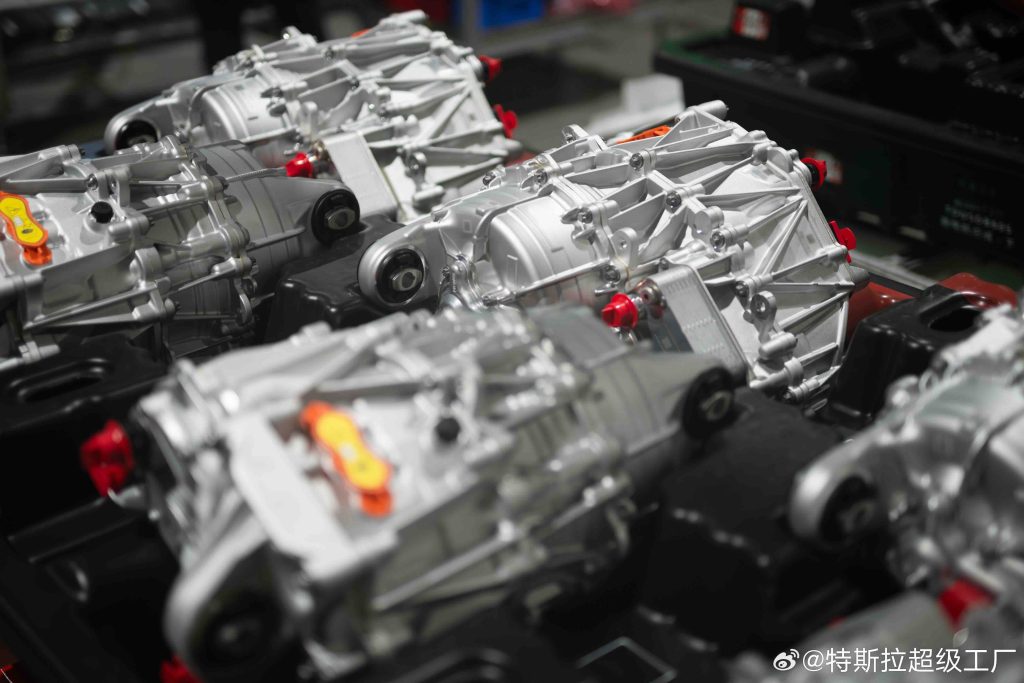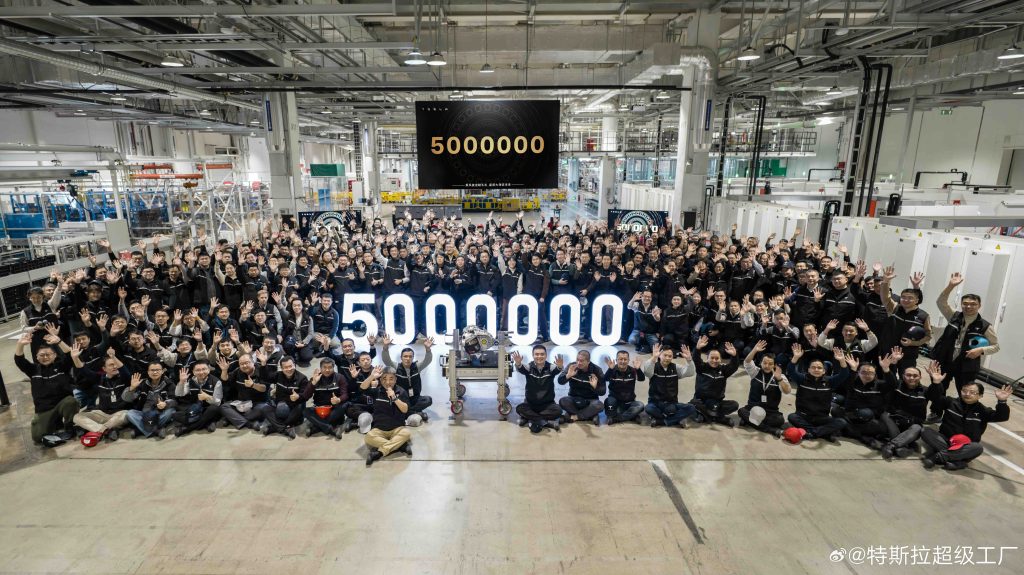News
Tesla and Arevon team up on 172-Megapack solar plus project
One of Tesla’s largest Megapack sites, the Arevon Eland solar project is supported by an impressive 1.2GWh of Megapacks.

Tesla and partner Arevon have completed the second phase of an energy storage site in Southern California, as highlighted in a short video shared this week.
On Monday, Tesla’s Megapack account on X posted a brief video on the Kern County, California “Eland” storage site, which was recently expanded to offer 300MW/1.2GWh of Megapacks supporting 758MW of solar. The so-called “Eland Solar-plus-Storage Project” site now features 172 Megapack units and 1.36 million solar panels, which the companies have previously said is roughly enough to power 200,000 homes annually.
In the video, Tesla also notes that the facility has site-level controls to regulate power output, “providing a firm resource to the grid,” and supporting the Los Angeles climate goal of reaching 100-percent renewable electricity by 2035. You can check out the clip below.
758 MW of solar supported by 1.2 GWh of Megapack at Arevon’s site in Kern County, California pic.twitter.com/HTP92uYVIP
— Tesla Megapack (@Tesla_Megapack) March 17, 2025
READ MORE ON TESLA MEGAPACKS: Tesla Megapack project in California housed in former steam plant
Arevon announced the official start of operations for Eland 1 in December with 150MW/600 MWh, and the Eland 2 phase has effectively doubled this. The company also appears to be on track for its targeted opening of Eland 2 in Q1 this year, though it’s not clear at the time of writing if Arevon has yet announced a start of operations for the second phase.
Last February, Arevon announced that it secured a $1.1 billion financial commitment for the remaining parts of the Eland 2 Solar-plus-Storage project, together with Eland 1 becoming one of the largest solar-plus-storage installations in the U.S. The projects also include a long-term purchase agreement from the Southern California Public Power Authority, which plans to facilitate contracts for the LA Department of Water and Power and Glendale Water and Power.
Tesla’s grid-scale Megapack batteries can store and deploy generated energy to the electrical grid, especially during periods of peak power usage, high demand, or outages. Coupled with solar or other energy sources in these kinds of solar-plus-storage sites, Tesla’s Megapacks can help support renewable energy for long periods of time, or at least add stability to the grid.
Over the past couple of years, Tesla has been deploying large-scale Megapack projects in markets around the world, as backed by an initial production facility in Lathrop, California. This “Megafactory” aims to eventually produce 10,000 Megapack units, or 40 GWh, per year, and it has been ramping up production since late 2022.
In November, the Lathrop Megafactory officially produced its 10,000th Megapack, and Tesla also started production at a second Megapack plant in Shanghai, China last month, after starting construction on the site last May. The Shanghai Megafactory is also expected to have a volume annual production of 10,000 units per year.
Additionally, Tesla has teased plans for a third Megafactory, though it has yet to disclose where such a facility would be built.
Tesla’s massive Megapack site near Melbourne is almost ready

News
Tesla earns top honors at MotorTrend’s SDV Innovator Awards
MotorTrend’s SDV Awards were presented during CES 2026 in Las Vegas.

Tesla emerged as one of the most recognized automakers at MotorTrend’s 2026 Software-Defined Vehicle (SDV) Innovator Awards.
As could be seen in a press release from the publication, two key Tesla employees were honored for their work on AI, autonomy, and vehicle software. MotorTrend’s SDV Awards were presented during CES 2026 in Las Vegas.
Tesla leaders and engineers recognized
The fourth annual SDV Innovator Awards celebrate pioneers and experts who are pushing the automotive industry deeper into software-driven development. Among the most notable honorees for this year was Ashok Elluswamy, Tesla’s Vice President of AI Software, who received a Pioneer Award for his role in advancing artificial intelligence and autonomy across the company’s vehicle lineup.
Tesla also secured recognition in the Expert category, with Lawson Fulton, a staff Autopilot machine learning engineer, honored for his contributions to Tesla’s driver-assistance and autonomous systems.
Tesla’s software-first strategy
While automakers like General Motors, Ford, and Rivian also received recognition, Tesla’s multiple awards stood out given the company’s outsized role in popularizing software-defined vehicles over the past decade. From frequent OTA updates to its data-driven approach to autonomy, Tesla has consistently treated vehicles as evolving software platforms rather than static products.
This has made Tesla’s vehicles very unique in their respective sectors, as they are arguably the only cars that objectively get better over time. This is especially true for vehicles that are loaded with the company’s Full Self-Driving system, which are getting progressively more intelligent and autonomous over time. The majority of Tesla’s updates to its vehicles are free as well, which is very much appreciated by customers worldwide.
Elon Musk
Judge clears path for Elon Musk’s OpenAI lawsuit to go before a jury
The decision maintains Musk’s claims that OpenAI’s shift toward a for-profit structure violated early assurances made to him as a co-founder.

A U.S. judge has ruled that Elon Musk’s lawsuit accusing OpenAI of abandoning its founding nonprofit mission can proceed to a jury trial.
The decision maintains Musk’s claims that OpenAI’s shift toward a for-profit structure violated early assurances made to him as a co-founder. These claims are directly opposed by OpenAI.
Judge says disputed facts warrant a trial
At a hearing in Oakland, U.S. District Judge Yvonne Gonzalez Rogers stated that there was “plenty of evidence” suggesting that OpenAI leaders had promised that the organization’s original nonprofit structure would be maintained. She ruled that those disputed facts should be evaluated by a jury at a trial in March rather than decided by the court at this stage, as noted in a Reuters report.
Musk helped co-found OpenAI in 2015 but left the organization in 2018. In his lawsuit, he argued that he contributed roughly $38 million, or about 60% of OpenAI’s early funding, based on assurances that the company would remain a nonprofit dedicated to the public benefit. He is seeking unspecified monetary damages tied to what he describes as “ill-gotten gains.”
OpenAI, however, has repeatedly rejected Musk’s allegations. The company has stated that Musk’s claims were baseless and part of a pattern of harassment.
Rivalries and Microsoft ties
The case unfolds against the backdrop of intensifying competition in generative artificial intelligence. Musk now runs xAI, whose Grok chatbot competes directly with OpenAI’s flagship ChatGPT. OpenAI has argued that Musk is a frustrated commercial rival who is simply attempting to slow down a market leader.
The lawsuit also names Microsoft as a defendant, citing its multibillion-dollar partnerships with OpenAI. Microsoft has urged the court to dismiss the claims against it, arguing there is no evidence it aided or abetted any alleged misconduct. Lawyers for OpenAI have also pushed for the case to be thrown out, claiming that Musk failed to show sufficient factual basis for claims such as fraud and breach of contract.
Judge Gonzalez Rogers, however, declined to end the case at this stage, noting that a jury would also need to consider whether Musk filed the lawsuit within the applicable statute of limitations. Still, the dispute between Elon Musk and OpenAI is now headed for a high-profile jury trial in the coming months.
News
Tesla Giga Shanghai celebrates 5 million electric drive unit milestone
The milestone was celebrated by the company in a post on its official Weibo account.

Tesla China has reached another manufacturing milestone at Gigafactory Shanghai, rolling out the facility’s 5 millionth locally produced drive unit.
The milestone was celebrated by the company in a post on its official Weibo account. In its post, the Giga Shanghai team could be seen posing with the 5 millionth drive unit.
Giga Shanghai’s major benchmark
The milestone drive unit was produced at Gigafactory Shanghai, which produces the Model Y and the Model 3. In a release, Tesla China noted that its three-in-one integrated electric drive system combines the motor, gearbox, and inverter into a single compact assembly. This forms a powerful “heart” for the company’s electric cars.
Tesla China also noted that its drive units’ integrated design improves energy conversion efficiency while reducing overall weight and complexity, benefits that translate into stronger performance, improved handling, and longer service life for its vehicles.

The new milestone builds on earlier achievements at the same site. In July 2024, Tesla announced that its 10 millionth electric drive system globally had rolled off the line at the Shanghai plant, making it the first self-produced Tesla component to reach that volume.
More recently, the factory also produced its 4 millionth China-made vehicle, a Model Y L. The factory has also continued hitting global production milestones, rolling out Tesla’s 9 millionth EV worldwide late last year, with the landmark vehicle being a Tesla Model Y.
Tesla China’s role
Construction of Giga Shanghai began in January 2019, with production starting by the end of that year. This made it the first wholly foreign-owned automotive manufacturing project in China. The facility began delivering Model 3 vehicles locally in early 2020 and added Model Y production in 2021. The plant is now capable of producing about 1 million vehicles annually.

Throughout 2025, Giga Shanghai delivered 851,732 vehicles, representing a 7.08% year-on-year decline, according to data compiled by CNEVPost. Even so, recent months showed renewed momentum.
In December alone, Tesla China recorded wholesale sales of 97,171 vehicles, including domestic deliveries and exports, making it the company’s second-best monthly total on record, per data from the China Passenger Car Association. Retail sales during December reached roughly 94,000 units, up about 13% year over year.








